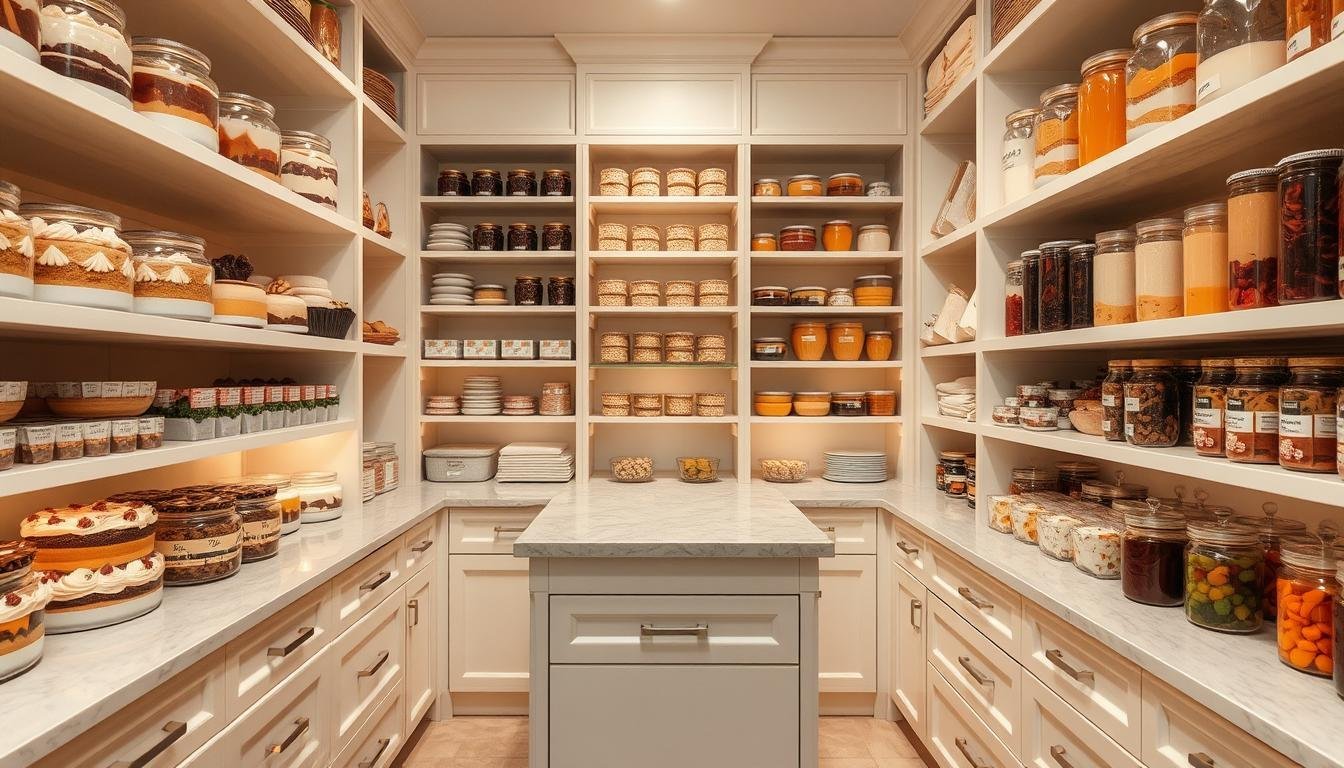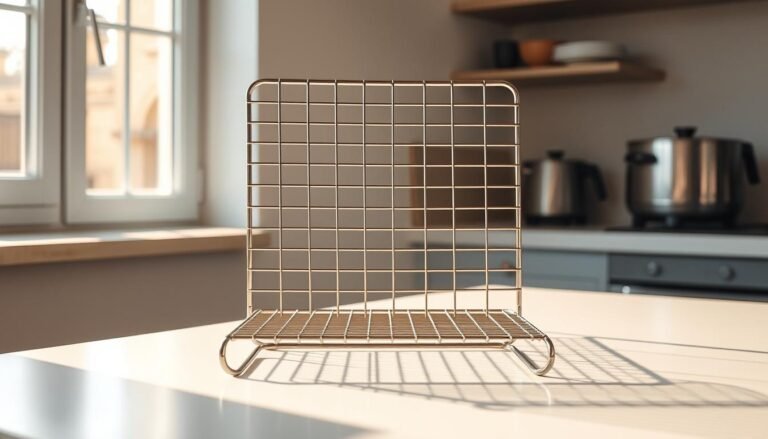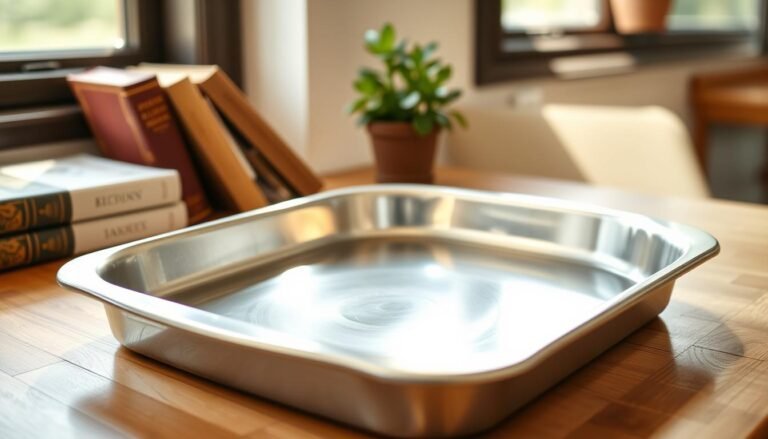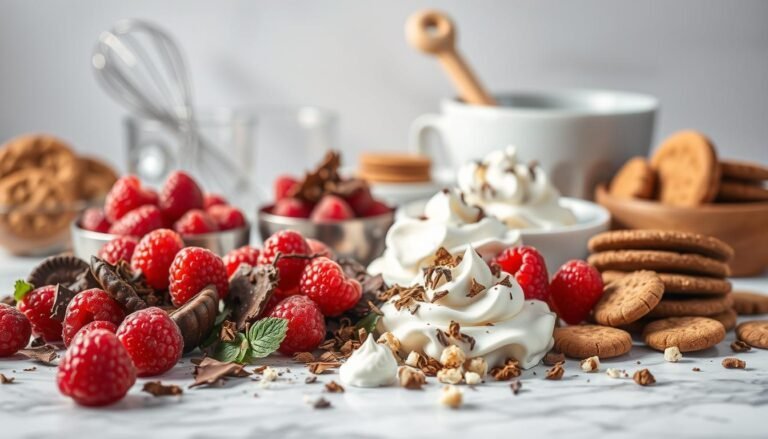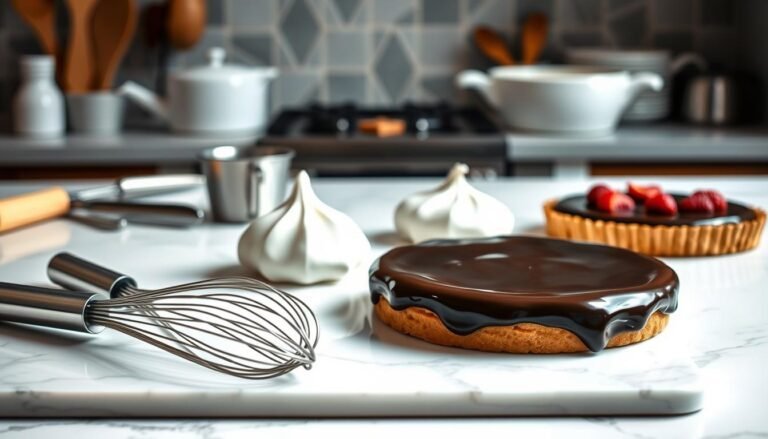Disclosure: This Post Contains Affiliate Links; We earn a commission on purchases.
Homemade baked goods are a labor of love. Whether you’ve spent hours on a cake or just 30 minutes on cookies. To keep them fresh, moist, and flavorful, proper storage is key.
Storing desserts right can greatly improve their life and quality. By using the right dessert storage tips, you can enjoy your treats longer.
Key Takeaways
- Proper storage maintains dessert freshness
- Different desserts require different storage methods
- Storage techniques impact dessert texture and flavor
- Understanding storage options is vital for dessert lovers
- Simple storage tips can extend dessert freshness
Understanding Dessert Shelf Life
Many things affect how long desserts last. Knowing these helps keep them fresh. Dessert freshness is key to their quality and taste.
Factors Affecting Dessert Freshness
Several factors impact dessert freshness. These include storage conditions, ingredient quality, and handling practices. The right storage conditions are vital.
High temperatures can spoil desserts fast. High humidity can make them soggy.
Signs of Spoilage in Different Desserts
Desserts show different signs of spoilage. Cakes and cupcakes might get moldy or stale. Custards and puddings can curdle or separate.
It’s important to know these signs to see if a dessert is safe to eat.
Planning for Optimal Storage
Planning is key to keeping desserts fresh. Choose the right containers and store them properly. Proper planning can help desserts last longer.
Essential Tools and Materials for Dessert Storage
Keeping desserts fresh is all about the right tools and materials. The right equipment can make your desserts last longer.
Airtight Containers and Quality Wrapping Materials
Airtight containers are key to keeping desserts fresh. They block air, moisture, and contaminants. Quality wrapping, like plastic wrap or foil, seals the dessert tightly.
Plastic wrap or transferring to an airtight container helps a lot. It keeps the dessert’s texture and taste better.
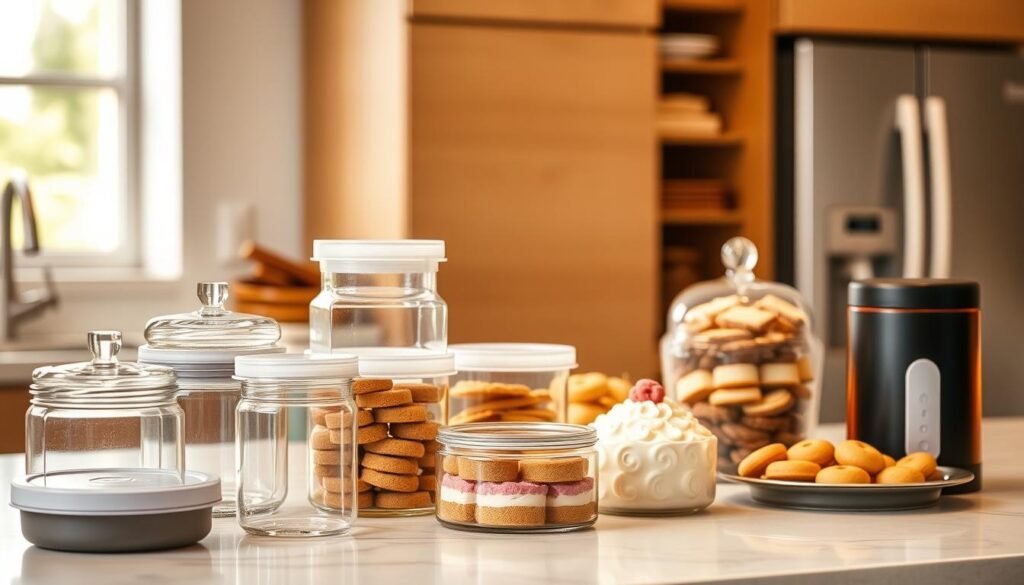
Temperature and Humidity Control Devices
Keeping the right temperature and humidity is important. Devices that control these help store desserts well. This is key for desserts that are sensitive to changes.
Organization Systems for Pantry and Refrigerator
Organizing your pantry and fridge is key for dessert storage. Organization systems like shelves or baskets keep things tidy. They help you use up older desserts before they go bad.
How to Store Desserts for Maximum Freshness
Storing desserts right is an art. You need to know the best ways and tools. Keeping desserts fresh means knowing the basics for all types.
General Storage Principles for All Desserts
First, desserts need to be in airtight containers. This stops moisture and bad stuff from getting in. Cakes and many baked treats should sit at room temperature in a sealed container.
Choosing the right wrapping is key. Plastic wrap or aluminum foil work well. But make sure it’s wrapped tight to keep air out.
Choosing Between Room Temperature, Refrigeration, and Freezing
How you store a dessert depends on what it is. Baked goods like cakes and cookies can stay at room temperature. But, dairy-based desserts need to be chilled. Freezing is great for keeping things like ice cream and frozen yogurt for a long time.
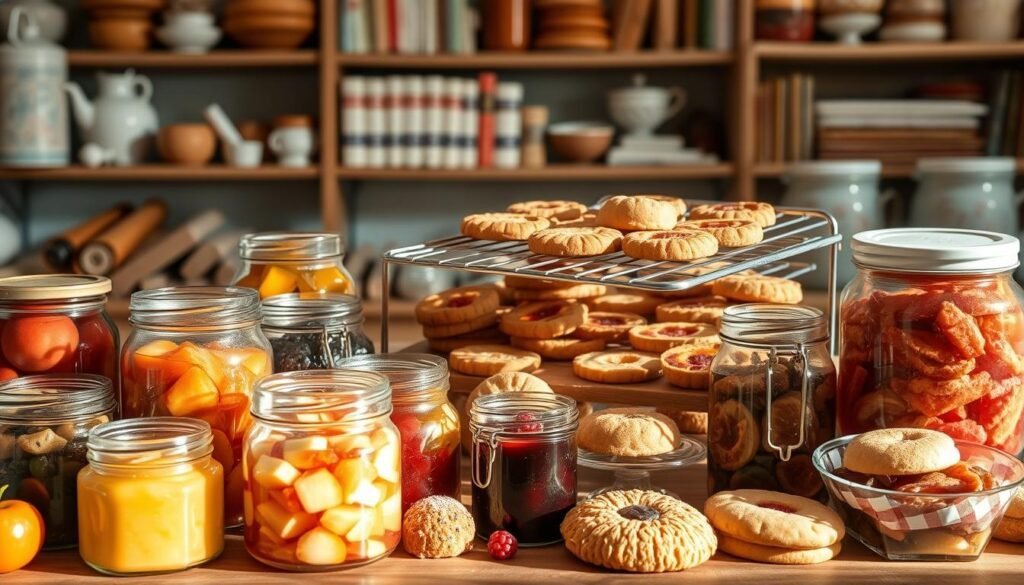
Proper Wrapping and Sealing Techniques
Wrapping desserts right is important for keeping them fresh. Use the right materials and make sure they’re sealed well. For example, a vacuum sealer removes air, keeping the dessert fresh.
By using these tips, you can enjoy your favorite desserts longer.
Storing Baked Goods
To keep baked goods fresh, it’s key to know the best storage methods. Each type of baked good has its own needs to stay fresh and tasty.
Cakes, Cupcakes, and Frosted Desserts
Cakes and cupcakes can be stored in different ways. Unfrosted cakes can be wrapped in plastic wrap and kept at room temperature for a day or two. Then, you can frost and assemble them. Frosted cakes should be kept in the fridge to keep the frosting from going bad.
Tips for storing cakes:
- Store unfrosted cakes at room temperature, wrapped tightly in plastic wrap.
- Refrigerate frosted cakes to extend the freshness of the frosting.
- Use cake keepers or containers to protect the cake from dust and damage.
Cookies, Brownies, and Bar Desserts
Cookies, brownies, and bar desserts should be stored in airtight containers at room temperature. It’s important to cool them completely first to avoid moisture buildup.
Storage tips for cookies and bars:
- Cool completely before storing.
- Use airtight containers to maintain freshness.
- Separate layers with parchment paper to prevent sticking.
Breads, Muffins, and Pastries
Breads, muffins, and pastries are best stored in a cool, dry place or frozen for longer shelf life. For bread, it’s important to store it in a way that keeps its crusty texture.
Storage tips for bread:
- Store at room temperature in a paper bag to maintain crustiness.
- Freeze for longer storage, wrapped tightly in plastic wrap or aluminum foil.
Pies, Tarts, and Cobblers
Pies, tarts, and cobblers need special care. Fruit pies can be stored at room temperature for a short time. But cream or custard pies should be kept in the fridge.
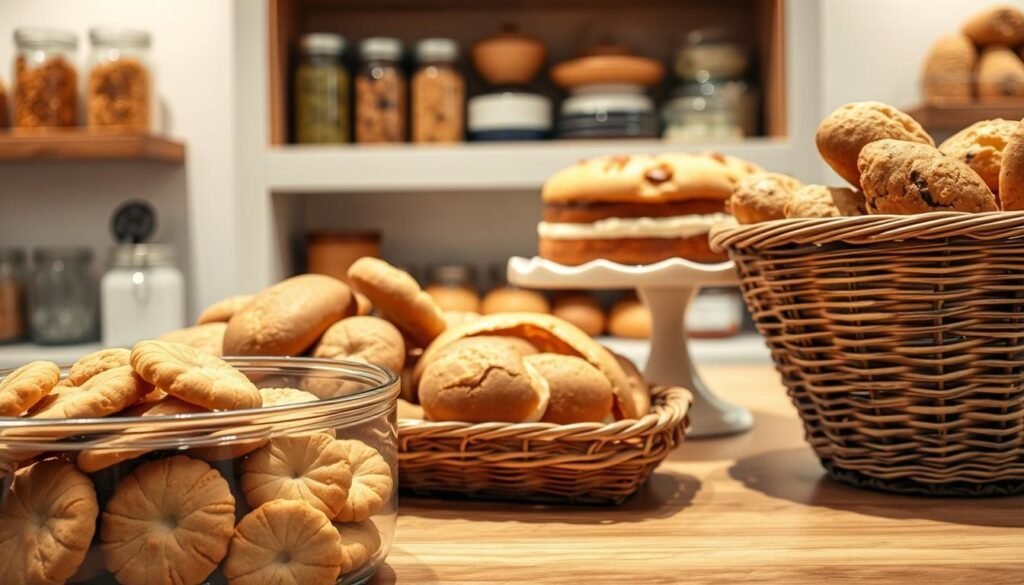
By following these storage tips, you can enjoy your baked goods for a longer time. They will stay fresh and delicious.
Preserving Refrigerated and Dairy-Based Desserts
Keeping refrigerated and dairy-based desserts fresh is key. It involves the right storage and handling. Desserts like custards, cheesecakes, and ice cream need special care to last longer.
Custards, Puddings, and Gelatin Desserts
Custards, puddings, and gelatin desserts are very sensitive. Store them in airtight containers in the fridge at 40°F (4°C) or below. Also, keep them away from other foods to avoid bad smells and tastes.
Cheesecakes, Mousse, and Cream Pies
Cheesecakes, mousse, and cream pies need a steady fridge temperature. Use airtight containers or wrap them well with plastic or foil. If you have frozen desserts, use freezer bags and ice packs to keep them from melting.
Ice Cream, Frozen Yogurt, and Sorbets
Ice cream, frozen yogurt, and sorbets must be in airtight containers at 0°F (-18°C) or below. Tight seals prevent freezer burn. For transport, use insulated bags with ice packs to keep them frozen.
By following these tips, you can make your desserts last longer. This way, they stay fresh and tasty for more time.
Extending Dessert Shelf Life with Natural Methods
There are simple ways to make desserts last longer. These methods keep your favorite treats fresh and tasty for more time.
Natural Preservatives for Homemade Desserts
Homemade desserts can last longer with natural preservatives. Honey and maple syrup fight off bad bacteria. Spices like cinnamon and vanilla also help because they’re full of antioxidants.
Vacuum Sealing and Other Preservation Techniques
Vacuum sealing is great for keeping desserts fresh. It removes air, stopping mold and bacteria. You can also use airtight containers or wrap desserts in plastic or foil.
For example, to keep cookies soft, store them in a plastic bag with a slice of bread. This trick is backed by studies.
Reviving Stale or Dried-Out Desserts
Stale or dried-out desserts can be made fresh again. Try microwaving a stale cake with a cup of water to moisten it. Or, wrap dried cookies in a damp paper towel and microwave them.
These tricks can make old desserts feel new again.
Conclusion
Storing desserts right is key to keeping them fresh and tasty. Knowing how long desserts last and using the right tools helps. This way, you can enjoy your favorite sweets for longer.
Good storage tips include picking the best way to store them. This could be at room temperature, in the fridge, or freezer. Using airtight containers and quality wraps is also important. Plus, methods like vacuum sealing can keep desserts fresh longer.
By using these tips, you can keep your desserts in top shape. Whether it’s baked goods, chilled desserts, or frozen treats, the right storage makes a big difference. This way, you can savor your desserts at their best.
FAQ
What is the best way to store cakes to keep them fresh?
How can I prevent cookies from becoming stale?
What is the ideal temperature for storing ice cream?
Can I store desserts with dairy products at room temperature?
How can I revive stale or dried-out desserts?
What are some natural preservatives that can be used to extend dessert shelf life?
How can I store bread and pastries to keep them fresh?
Can I store frozen desserts in the refrigerator?

From beginner-friendly tips to no-fuss dessert ideas, Ryan is all about helping people enjoy baking and treat-making without the stress. Whether you’re whipping up something for a party or just craving something sweet, Ryan’s practical approach makes it easy to create desserts that taste great and don’t take all day.
Subscribe to Our Newsletter

